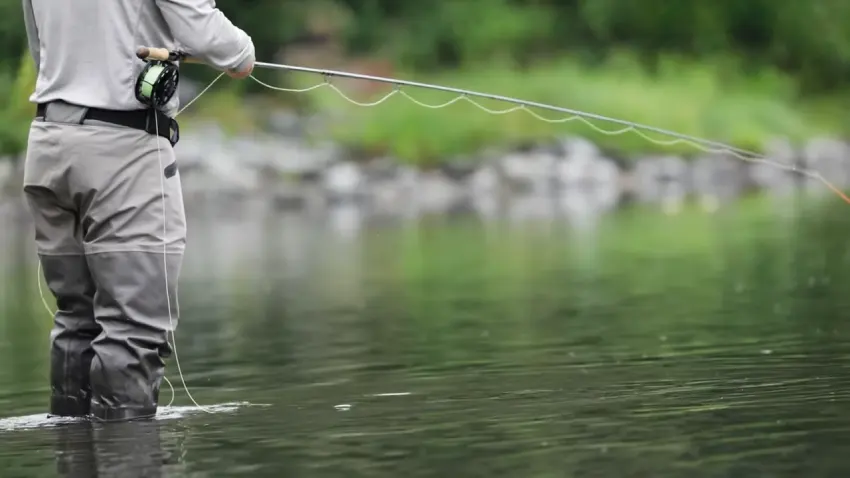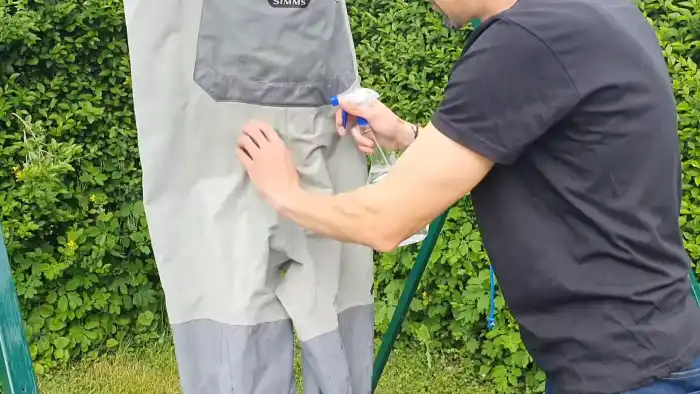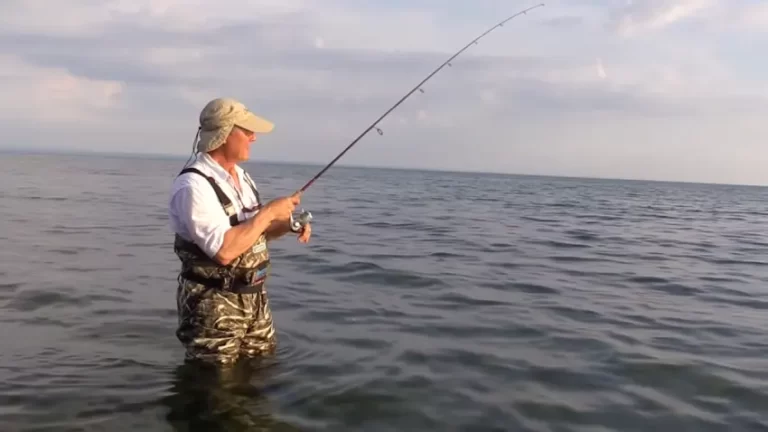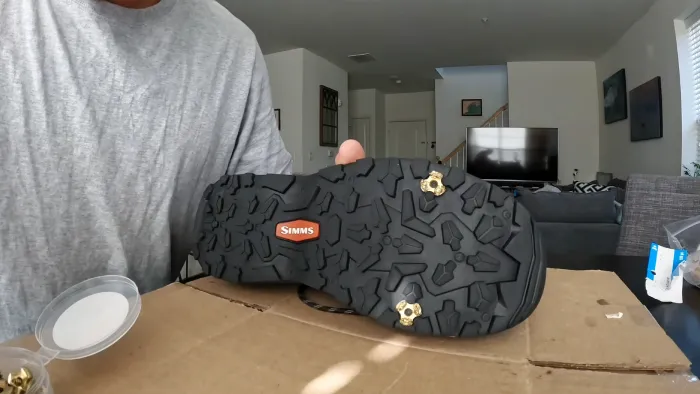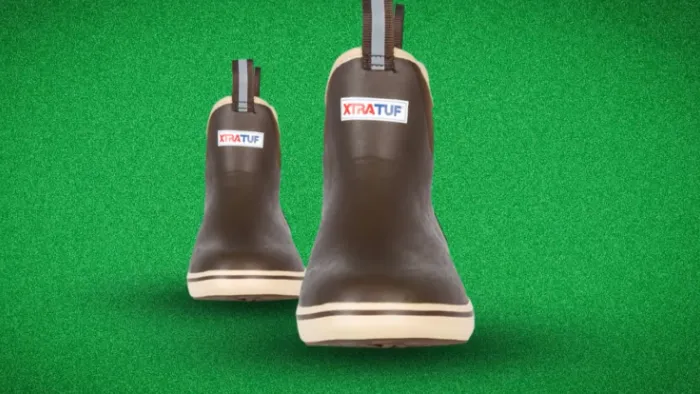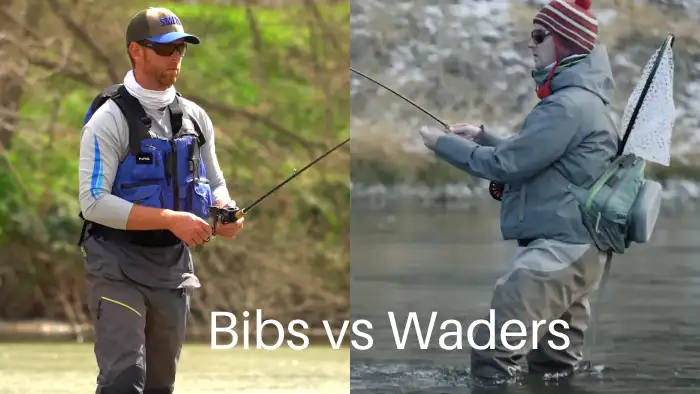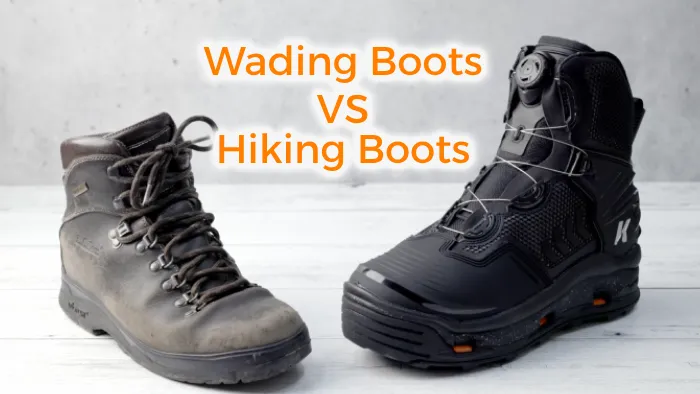How Long Should Waders Last While Fishing: 5 Factors Determine
Your fly fishing waders are the trusted companion that keeps you dry and comfortable as you embark on your angling adventures. But how long should they last?
The lifespan of fly fishing waders can vary depending on various factors such as construction quality, materials used, frequency of use, maintenance, etc.
With moderate use and proper care, a pair of quality fly fishing waders can last for multiple seasons, typically ranging from 2 to 7 years or even longer, up to 10 years. But, heavy use or fishing every day may reduce their lifespan.
We’ll explore the factors that determine the longevity of fly-fishing waders. You’ll also discover how to extend your waders’ life and whether leaky waders can be repaired. So grab your fishing gear, and let’s get into wader basics.
What Determines the Lifespan of Fly Fishing Waders?
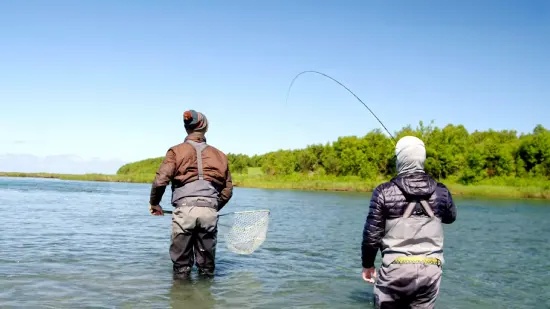
Several factors come into play when it comes to the lifespan of fly-fishing waders. There are:
- Usage Patterns
- Quality and Material
- Care and Maintenance
- Fit
- Environment
Let’s examine the facts in more detail.
1. Usage Patterns
Depending on how you use your fishing waders, it will determine how long they will last. To get the most out of your waders, it’s important to consider your usage patterns, how often and how intensely you use them. The more often you use your waders, the quicker they may wear out.
Heavy use, such as trekking through rough terrain or battling strong currents, can put more strain on your waders. Be mindful of the conditions you expose them to.
2. Quality and Material
Material and quality also influence the lifespan of fishing waders. Investing in high-quality waders crafted from durable materials ensures you’ll have gear that can withstand the toughest fly fishing adventures.
Reputable brands often use superior craftsmanship and materials to enhance the durability of their waders. These higher-quality waders tend to last longer compared to cheaper options.
3. Care and Maintenance
The way you care and maintain your fishing waders determines their lifespan. Properly caring for your waders, especially after each use, is key to keeping them in tip-top shape and ensuring they have a fishing lifespan that’s as long as a river winding its way through the mountains.
4. Fit
Ensuring that your fishing waders are fitted properly is important, as this will determine their lifespan. Finding waders that hug your body snugly without causing discomfort is essential for a comfortable fishing experience. Ill-fitting waders can lead to rubbing, pulls, and weak spots, accelerating wear and tear.
5. Environment
The environmental conditions in which waders are used can affect their lifespan. In order to maximize the lifespan of your waders, it’s important to consider the impact of your fishing environment on their durability.
Exposure to extreme temperatures, abrasive elements, and UV rays can significantly affect the longevity of your waders.
Hot temperatures can cause the material to degrade faster, while cold temperatures can make the fabric more brittle. Additionally, abrasive elements like rocks and gravel can cause tears and punctures, while UV rays can weaken the fabric over time.
Choosing waders specifically designed to withstand the conditions of your fishing environment is crucial to ensure they last as long as possible.
When Should You Replace Your Fly Fishing Waders?
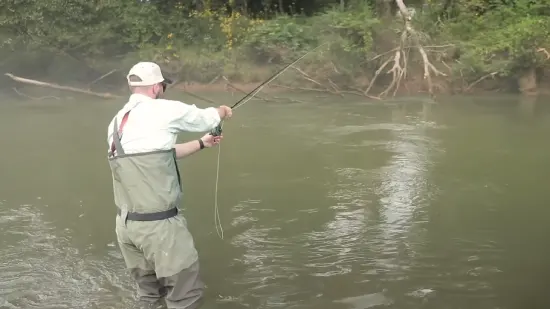
Before you head out on your next fly-fishing adventure, do you know when it’s time to replace your waders? Here are a few signs that indicate it might be time for a new pair:
1. Material Degradation
As the fabric of your waders slowly weathers and withers away, its vibrant strength fades like an autumn leaf. This signals the gradual degradation of its material.
Fading, stiffness, cracking, or signs of significant wear and tear are clear indicators that your waders are nearing the end of their lifespan.
Keeping a close eye on these signs is important because continued use of degraded material can lead to leaks and discomfort during your fly fishing adventures.
2. Fitting Issues
Another crucial indicator that it may be time to replace your fly fishing waders is when you start experiencing fitting issues.
Waders may lose their original shape and fit as they age and undergo wear and tear. This can lead to discomfort, restricted movement, and compromised performance on the water.
You may notice rubbing, pulling, or excessive bagginess when your waders no longer fit properly. Ill-fitting waders can cause discomfort during long fishing trips and may even lead to chafing or blisters.
Moreover, a poor fit can affect your mobility, hindering your ability to navigate the water and cast easily.
It’s essential to prioritize a proper fit for your fishing waders. If you find that your current pair no longer provides the snug and comfortable fit you need, it clearly indicates that it’s time to consider replacing them. .
Guidelines to Extend the Life of Your Fly Fishing Waders
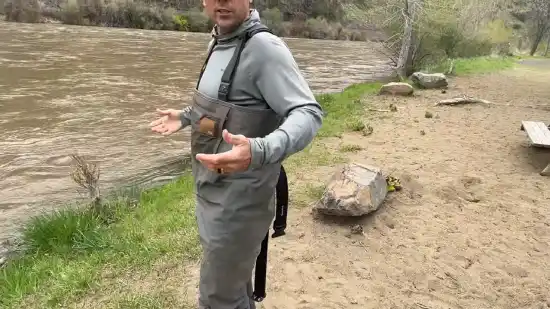
To prolong the life of your fly fishing waders, you should keep several key points in mind.
1. Shield from Direct Sunlight
Protecting your fly fishing waders from direct sunlight is essential to extend their lifespan. UV rays can damage your waders’ waterproof finishes and materials over time.
To avoid this, ensure that you store your waders in a cool, shaded area where they’ll be shielded from the sun’s harmful rays. If you need to dry your waders outside, choose a location away from direct sunlight.
When your waders are exposed to prolonged sunlight, the damage may be visible as cracks, fading, and discoloration.
These indications hint that the waterproofing properties of the waders are likely compromised, and water may start seeping in, increasing the chance of leaks.
Therefore, it’s crucial to provide your waders with the right amount of shade or indoor storage to protect them from the sun’s harmful effects.
2. Proper Drying
Properly drying your waders ensures their longevity and prevents the dreaded mildew monster from ruining your outdoor adventures.
After each use, hang your waders to air dry. Avoid leaving them in the car, as this can promote mildew formation.
3. Cleaning
When you clean your waders, you’ll be amazed at how a simple wash can remove up to 99% of dirt and grime, ensuring they stay fresh and ready for your next fishing adventure. Cleaning your waders properly is essential for their longevity and performance.
Here are some tips to ensure a thorough cleaning:
- Gently hand wash in cold water with powder detergent or use a washing machine on a gentle cycle.
- Avoid dry-cleaning or using a dryer, as this can damage the materials.
- Pay attention to any specific cleaning instructions provided by the manufacturer.
- Allow your waders to air dry completely before storing them to prevent mold and mildew growth.
4. Apply Water Repellent
After cleaning your waders, applying a direct water repellent is crucial to restore their water resistance. This step is essential in prolonging the lifespan of your waders.
Applying a water repellent creates a protective barrier that prevents water from seeping into the fabric, keeping you dry and comfortable. This simple yet effective technique will ensure your waders last longer and serve you well in outdoor adventures.
5. Proper Storage
Store your waders in top shape in a dry, cool, and dark place, away from any moisture, heat, or direct light. Proper storage is crucial for extending the lifespan of your waders. Follow these essential steps to ensure their longevity:
- Hang them upside down to prevent unnecessary folding.
- Avoid storing them near any sources of moisture, such as basements or damp closets.
- Keep them away from direct sunlight and excessive heat that can cause damage.
6. Trim Your Toenails
Protecting the toes of your fly fishing waders is essential. It’s easy for sharp or long toenails to puncture or wear out the toe area of your waders, reducing their durability and protection.
To avoid this, ensure that you trim your toenails before wearing your waders.
The toe area of your waders is specifically designed to shield your toes and prevent accidental scrapes, damage, and punctures.
Therefore, you must maintain it in good condition. By taking a few minutes to trim your toenails, you’ll avoid the risk of punctures from toenails, ensuring that your waders remain in good condition for years.
Can leaky fishing waders be repaired?
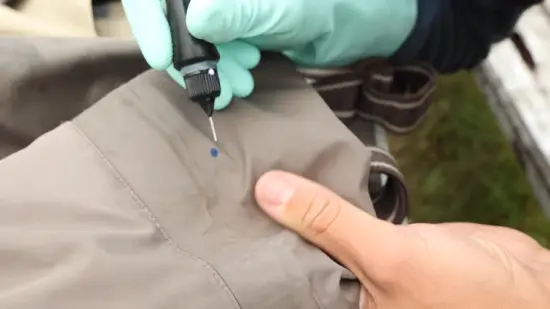
You can easily repair leaky fishing waders with adhesive patches and sealants designed specifically for waders, ensuring they last longer and provide effective water resistance.
Small leaks or pinhole leaks can be fixed using repair kits that include these materials. Another option is using UV wader-repair resin, which cures in seconds when exposed to direct sunlight.
Can you wear regular pants or jeans underneath your fly fishing waders?
Wearing jeans or regular pants underneath your fly fishing waders isn’t recommended. Because it can compromise comfort and potentially affect the waders’ insulating properties. Regular pants made of cotton can retain moisture, leading to discomfort during your fishing adventures.
To ensure maximum comfort and performance, it’s advisable to wear quick-dry pants or appropriate base layers specifically designed for use with waders. These specialized garments will help keep you dry and comfortable throughout your fly fishing experience.
Does salt water damage fishing waders?
Saltwater does not inherently damage fishing waders. However, if waders are not properly cared for after exposure to saltwater, damage may occur over time. It is crucial to rinse or wash waders after every saltwater fishing session to prevent any salt buildup, which can weaken the fabric and stitching.
This regular maintenance can significantly increase the lifespan of your fishing waders. Therefore, it is recommended to be proactive about protecting your fishing gear and ensure that proper maintenance practices are implemented to keep your waders in optimal condition.
Savor Your Fishing Adventures: Maximizing the Lifespan of Your Waders
You now know that the life expectancy of fly fishing waders can vary depending on several factors, including usage patterns, material quality, fit, care, and environmental conditions.
Fly fishing waders can be a long-lasting investment with proper care and maintenance. Understanding the factors that affect their lifespan, knowing when to replace them, and implementing tips to extend their life will help anglers make the most of their waders.
By caring for this essential gear, anglers can focus on their fishing adventures with confidence and comfort for years.

